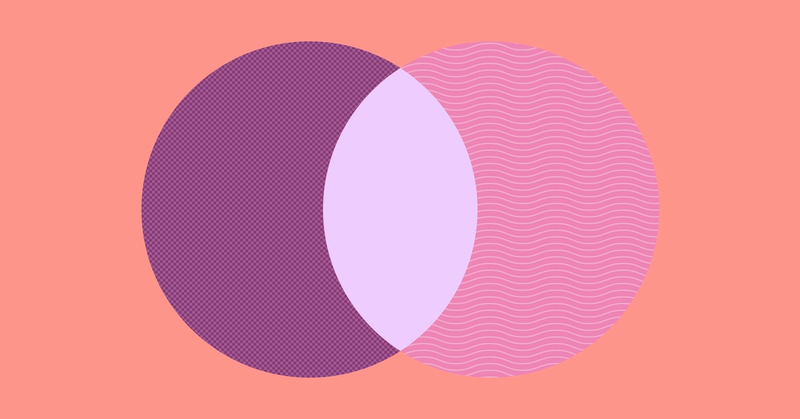As a business owner, you’ve probably heard the words ‘customer’ and ‘consumer’ used interchangeably. In fact, most entrepreneurs have probably made the mistake of believing that these two words are synonymous, using them to describe anyone who purchases a product or service from a business. However, it might surprise you to hear that customers and consumers are actually two different groups - and it’s crucial you understand how customers and consumers vary.
Here we’ll explore the key differences between the customer vs consumer, the customer vs consumer definition, consumer problems vs customer problems, the customer-to-consumer pipeline and why fully understanding these two groups is so important.
Customer vs consumer definition
While you probably already know the definitions of the words ‘customer’ and ‘consumer’ alone, you may not have considered how these definitions relate to and vary. When we’re talking about the meaning of customer vs consumer in business, it’s all about who’s purchasing a product or service and who’s actually using the product or service.
Your customer is the party that purchases your product or service. Whether this is a one-time deal or a recurring transaction, customers are your bread and butter. After all, it’s the customers' money that keeps your business thriving - whether or not they actually use your product after purchasing is another matter.
The party who actually uses your product or service is the consumer, whether they purchased it from you directly or from a third party. Your consumer and customer could be the same person or they could be two different people. For example, if a parent buys a toy and gives the toy to their child, the parent is the customer and the child is the consumer.
Identifying the differences, if any, between your target customer and target consumer is crucial for business success - it will influence how you market your product, where you sell your product and more.
Customer vs consumer differences
When trying to pinpoint what separates your target customer from your target consumer, use this table to identify the key differences.
| Definition | Examples | Motivations | Payments | |
|---|---|---|---|---|
Customer | Buys the product or service | A parenting buying a toy for a child A small business buying in stock from a wholesaler An owner buying food for their dog | Value Need Desire | Pays directly for the product or service |
Consumer | Uses the product or service | A child playing with a toy gifted to them A shopper purchasing an item from a third-party seller A passerby claiming a free sample outside a cafe/shop | Utility Enjoyment Necessity | May not directly pay |
Again, it might be that your customer and consumer are the same person - this is just an example of how the main differences between customers and consumers can be broken down.
Steve Ledgerwood - Capsule CEO
“Managing customers and consumers requires different approaches because they each play a unique role in the buying process. Customers, the ones making the purchase, want strong relationships, personalized offers, and great service. That’s how you keep them coming back.
Consumers, however, care more about the product experience - think ease of use or ongoing support. While customers focus on value and buying decisions, consumers prioritize usability and satisfaction. To ensure long-term customer loyalty and success, you need to balance both effectively.”
Different customer vs consumer types
When you’re trying to paint a picture of your target customer vs consumer, it pays to work out what type of consumer or customer they are. Both can be broken down into certain subcategories, which can give you a better understanding of their motivations and help you create the perfect sales pitch to appeal to each group.
Types of customer
- Repeat customers: These are the customers that purchase from you again and again, whether that’s a few times a year or a few times a week.
- Discount customers: These customers are motivated by lower prices and good value, so whether they turn into repeat customers depends on how you cater to these desires.
- Trade customers: Other businesses that buy your products to resell or redistribute to their own customer base.
- Need customers: These customers are driven by necessity rather than by desire.
- Final customers: The end-users who purchase your products and use them personally - this is where the customer and the consumer crossover. Final customers may also be repeat customers, discount customers or need customers.
Types of consumer
- Discrete consumers: Consumers who only use your product or service once and don’t purchase/repurchase, such as those receiving free trials or samples.
- Extrovert consumers: Consumers who influence the buying decisions of others, like social media influencers, critics or reviewers.
- Commercial consumers: Businesses or organizations that use your product for operational purposes.
Customer vs consumer impact
Customers and consumers of all types affect your business in different ways. Given that everyone who interacts with your business has the potential to be a customer, consumer or both, there’s no solid metric for measuring or ranking customer vs consumer impact.
However, it pays to know how different aspects of customer vs consumer behaviours could impact your business.
Purchase frequency, average spend, brand engagement and whether customers and consumers recommend your brand to others are just a few ways that both can impact your business, with all of these behaviours varying significantly between the two groups.
Trying to appeal to both customers and consumers in the long term is a delicate dance of attraction and retention. So, developing an understanding of how customers vs consumers interact with your business is key.
Consumer problems vs customer problems
One of the main differences between a customer vs consumer is the type of problem that the different groups potentially face. By understanding the potential problems affecting your customers and consumers, and developing solutions to these issues, you’ll be able to provide better service to customers and consumers alike, keeping them coming back to you.
| Customer problems | Consumer problems | Problems faced by both customers and consumers |
|---|---|---|
|
|
|
These are just a few examples - you should always look carefully and identify problems faced specifically by your customers and consumers. Recognizing these problems and tailoring your strategies accordingly means you’re far more likely to provide a high quality of service to everyone who interacts with your business.
Customer-to-consumer and consumer-to-customer pipeline
Both customers and consumers can impact your business positively in the long-term if you provide a great product or service. However, the best outcomes come when you turn customers into consumers and vice versa.
While it’s not always possible to do this - for example, you’re unlikely to turn a parent buying a toy for their child into a consumer themselves - successfully converting your consumers and customers into that all-important second group can drive great sales results.
An example following the customer to consumer sales pipeline could feature a customer who has purchased a product or service for the benefit of someone else being convinced to try it out for themselves. The consumer to customer pipeline often occurs when a consumer is given the opportunity to try a product or service without purchasing, whether this is through a free sample, trial or gift, and decides to purchase the product or service for themselves.
By turning customers into consumers and consumers into customers, you’ll see an uptick in demand and, in turn, better sales.
Wrapping up
Understanding the difference between customer vs consumer is about much more than just using the two words correctly - you need to cater to each one differently and tailor your selling strategies with the aim to convert customers into consumers and consumers into customers. After all, customers might put money in the till but happy consumers inspire new customers and consumers through positive feedback.
Now that we’ve run through the differences between these groups, the problems they face and the impact they have on your business, we hope you feel better equipped to cater for each of your customers and consumers. Remember, understanding your audience in all its forms isn’t just smart - it’s essential for your business to thrive.
Capsule is a CRM designed for small businesses. It has a rich suite of features, including content management, project management and so much more.
Start your 14-day free trial today.
Frequently Asked Questions
Yes, a person can be both a customer and a consumer if they purchase a product or service for their use. For example, if you buy laptop for personal use, you are both the customer - the one making the purchase - and the consumer. However, if you buy it as a gift, you’re the customer, but the recipient is the consumer.
A consumer is anyone who uses or benefits from a product or service. This is regardless of whether they purchased it or it was gifted to them. Consumers drive demand and influence purchasing decisions, making them key to a business’s success.
In insurance, the customer is the person or business that buys the policy, while the consumer is the person who receives coverage or benefits. For example, a company might purchase health insurance, but their employees are the ones who use the coverage, making them the consumers.




